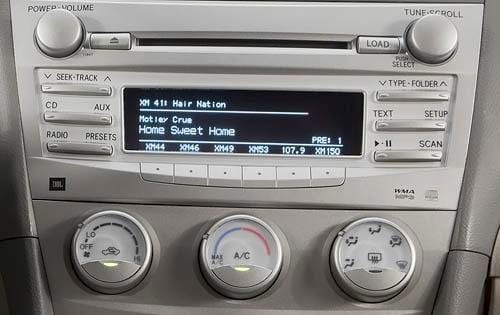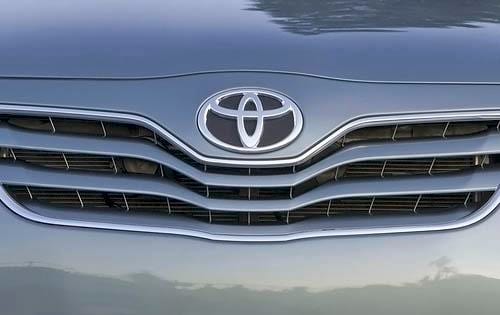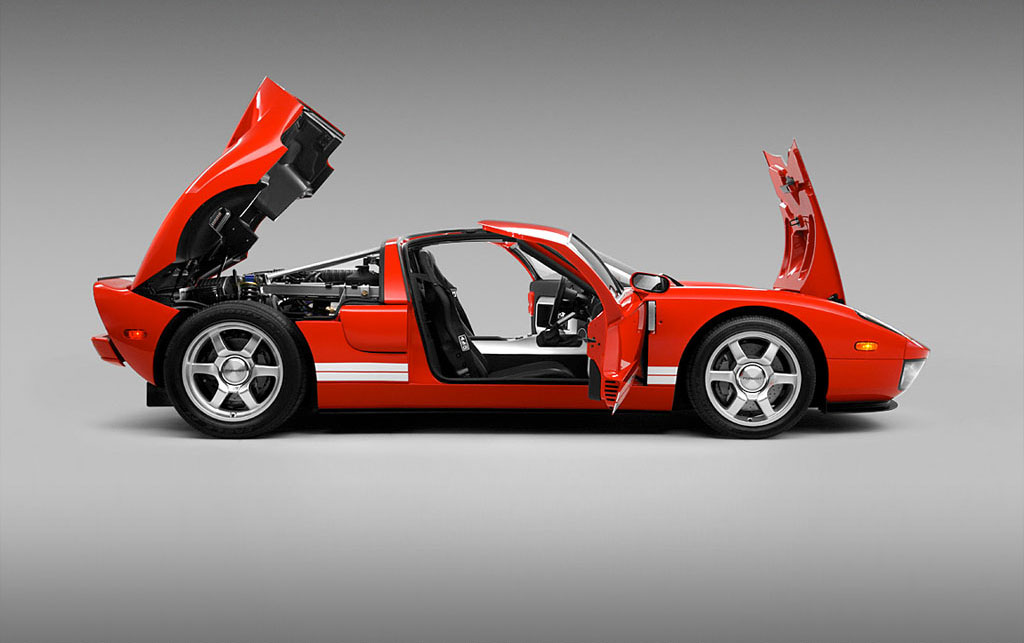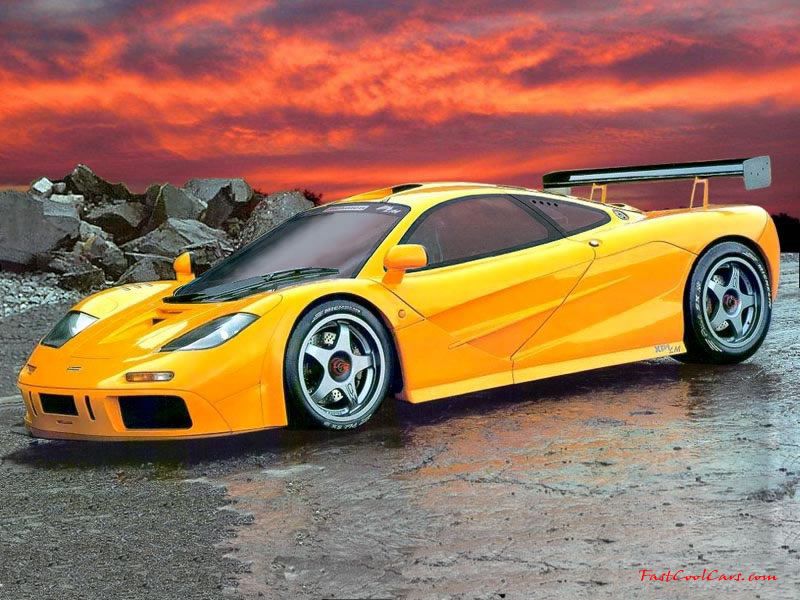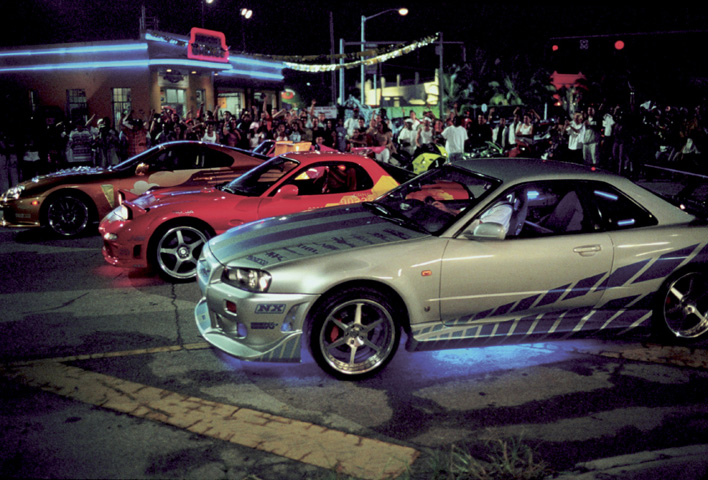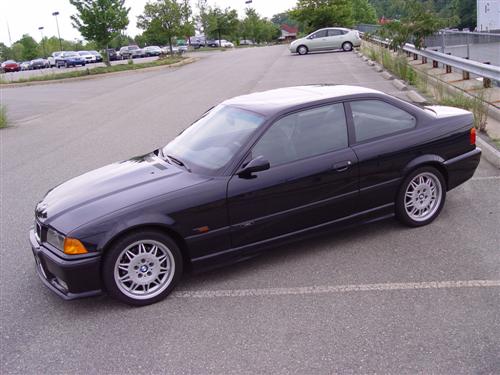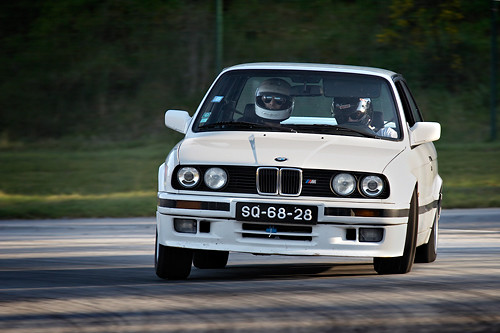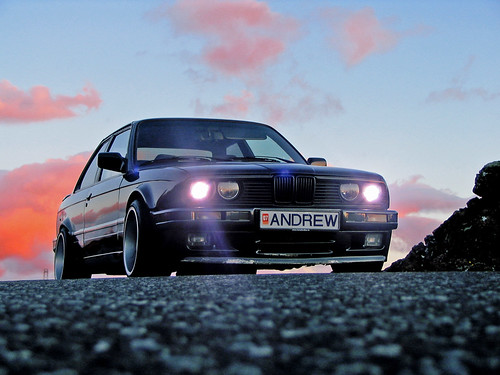Wait for the 2012 Camry if you want the all-new, next-generation version of a midsize car that’s defined good transportation value. The 2012 Camry will also be further distanced from Toyota’s recall catastrophe, and that should benefit its residuals. Buy a 2011 Camry if you’re in immediate need of a roomy sedan whose main surprise may be just how refined it really is. The 2011 Camry should carry juicy discounts as Toyota tries to make up for sales lost during the recall and as dealers clear inventories for the all-new 2012 model. The best way to get the full value from a 2011 Camry would be to keep it for more than six years or so, beyond the point at which resale prices would be tarnished by the unintended acceleration mess.
Styling: The 2011 Toyota Camry will carry over appearance changes given the 2010 Camry, the first for this design generation since it debuted for model-year 2007. As before, Camry comes in a single four-door sedan body style that begins with a base CE model and climbs through the volume-selling LE trim, sporty SE grade, and top-of-the-line XLE model. Slotted between the LE and XLE is the 2011 Camry Hybrid. Style changes associated with the 2010 mid-cycle freshening were mild. All models got gently revised grilles and all but the Hybrid gained larger headlamps and revised taillamps. New wheel designs were part of the updates. Camry’s styling doesn’t look dated but it might look dowdy next to aggressive new sheet metal worn by the redesigned 2011 Hyundai Sonata and the fresher face of the 2010 Ford Fusion. To distinguish the Camry SE model from other Camrys Toyota gives it’s a black instead of silver grill, fog lamps, and subtle aero body addenda. Dimensionally, the 2011 Camry is square in the middle of the midsize-sedan field, but it makes wonderfully efficient use of cabin space. Camry is Toyota’s best-selling car and for calendar 2009 – before the unintended acceleration controversy – it was America’s top-selling car, too. Its basic structure is engineered to serve Lexus, Toyota’s premium division, where it’s the foundation for that brand’s most popular car, the ES 350. That helps account for Camry’s uncommon ability to isolate occupants from unwanted noise and unpleasant road surfaces.
Mechanical: The 2011 Toyota Camry will continue with two conventional gas powertrains and a gas-electric hybrid system. All models have front-wheel drive, which places the weight of the engine and transmission above the front tires, a traction benefit in slippery conditions. Camry’s four-cylinder engine is rated at 179 horsepower in the SE model, 169 in the other trim levels. All but the CE are available with a 268-horsepower V-6. The four-cylinder engine comes with a six-speed manual transmission or a six-speed automatic; the V-6 comes only with a six-speed automatic. The 2011 Toyota Camry Hybrid teams a four-cylinder gas engine with an electric motor for a net 187 horsepower. It saves gas because it can drive at low speeds on electric power alone and can automatically shut off its engine at idle, then immediately restart it at a touch of the gas pedal. The hybrid system uses a continuously variable automatic transmission and recharges itself with no plug-in required. All 2011 Cameras come with four-wheel antilock disc brakes an antiskid system. Also known as vehicle stability control, antiskid minimizes chances of sideways slides and teams with standard traction control, which enhances grip away from a stop. The SE model has a firmer, sport-tuned suspension.
Features: The 2011 Toyota Camry will boast a standard-equipment list that covers the comfort and safety essentials, with a nice dollop of convenience-tech, too. Air conditioning is standard, as is a steering wheel that tilts, telescopes, and has audio buttons. Cruise control, a height-adjustable driver’s seat, and power windows, locks, and mirrors also are included even on the base CE model. All but the SE have split-folding rear seatbacks. Every 2011 Camry comes with head-protecting curtain side airbags. Leather upholstery, power sunroof, navigation system, and remote engine start are among the options, though not all are available on every model. Optional or standard on every model is an audio system that includes Bluetooth hands-free phone connectivity, integrated satellite radio, and USB linking for iPods and other MP3 devices. The 2011 Camry Hybrid has Fraichir cloth upholstery, a combination of silk protein and synthetic fiber that Toyota says is gentle to the skin. Camry SE models come with 17-inch alloy wheels. All other Camry models have 16-inch wheels, with XLE models sporting alloys and CE and LE having steel wheels with plastic wheel covers.
Mechanical: The 2011 Toyota Camry will continue with two conventional gas powertrains and a gas-electric hybrid system. All models have front-wheel drive, which places the weight of the engine and transmission above the front tires, a traction benefit in slippery conditions. Camry’s four-cylinder engine is rated at 179 horsepower in the SE model, 169 in the other trim levels. All but the CE are available with a 268-horsepower V-6. The four-cylinder engine comes with a six-speed manual transmission or a six-speed automatic; the V-6 comes only with a six-speed automatic. The 2011 Toyota Camry Hybrid teams a four-cylinder gas engine with an electric motor for a net 187 horsepower. It saves gas because it can drive at low speeds on electric power alone and can automatically shut off its engine at idle, then immediately restart it at a touch of the gas pedal. The hybrid system uses a continuously variable automatic transmission and recharges itself with no plug-in required. All 2011 Cameras come with four-wheel antilock disc brakes an antiskid system. Also known as vehicle stability control, antiskid minimizes chances of sideways slides and teams with standard traction control, which enhances grip away from a stop. The SE model has a firmer, sport-tuned suspension.
Features: The 2011 Toyota Camry will boast a standard-equipment list that covers the comfort and safety essentials, with a nice dollop of convenience-tech, too. Air conditioning is standard, as is a steering wheel that tilts, telescopes, and has audio buttons. Cruise control, a height-adjustable driver’s seat, and power windows, locks, and mirrors also are included even on the base CE model. All but the SE have split-folding rear seatbacks. Every 2011 Camry comes with head-protecting curtain side airbags. Leather upholstery, power sunroof, navigation system, and remote engine start are among the options, though not all are available on every model. Optional or standard on every model is an audio system that includes Bluetooth hands-free phone connectivity, integrated satellite radio, and USB linking for iPods and other MP3 devices. The 2011 Camry Hybrid has Fraichir cloth upholstery, a combination of silk protein and synthetic fiber that Toyota says is gentle to the skin. Camry SE models come with 17-inch alloy wheels. All other Camry models have 16-inch wheels, with XLE models sporting alloys and CE and LE having steel wheels with plastic wheel covers.
From behind the wheel: Drive it like you understand it, and no other midpriced midsize can match Camry’s refinement. That said, no 2011 Camry will never be confused with a sports sedan. This car aims for -- and delivers with great success -- a stable, predictable driving experience. The four-cylinder engine satisfies virtually any everyday acceleration need, and the smooth V-6 exceeds most.
Except for the ability to move silently at low speeds and shut off at stops, the 2011 Camry Hybrid performs much like the conventional four-cylinder model, so its fuel-saving character is pretty transparent. Its continuously variable transmission, or CVT, performs the duties of an automatic but with a rheostat-like delivery of power rather than with stepped gear ratios. With all the benefits of Camry’s sound design and only a few exterior badges to call attention to its gas-electric powertrain, the Camry Hybrid is a fine way to go green without broadcasting it.
Any Camry can be legitimately criticized for going a little heavy on the Novocain. Steering is numb and feathery light. In fast turns, CE, LE, XLE, and Hybrid models suffer tire squeal, nose plow, and pronounced body lean. The Camry SE’s tauter suspension tuning enhances road feel and quells some body lean, but the antiskid system tends to activate prematurely for a car with sporty ambitions. It dampens engine power and applies braking well before the SE approaches maximum cornering grip, frustrating the driver’s capacity to use this model’s higher handling limits.
Dashboard and controls: Camry’s main gauges are big and vividly illuminated. Dashboard controls operate with uncommon smoothness. Certain displays can frustrate, however. The instrument panel monitor that shows climate system settings can wash out in bright sunlight. And touch points on the navigation screen double as audio controls, needlessly complicating their use.
The Camry Hybrid comes with a dashboard screen that can illustrate the real-time energy flow between the gas engine, electric motor, nickel-metal-hydride battery pack, and even the brakes (where friction is tapped to recharge the battery). It’s entertaining, but potentially distracting.
The interior of the 2011 Camry is bright and airy, but running your hands over the instrument panel and cabin walls reveals some lightweight plastic panels. It’s far from a deal-breaker, but does reveal some cost-cutting that Toyota would do well to correct for the next-generation Camry.
Room, comfort, and utility: This is what a five-passenger midsize car ought to feel like. Camry’s seats strike a rare balance between support and softness. Head room is generous all around. Only if a front seat is rolled all the back to accommodate a truly tall driver or passenger is rear leg room compromised. The rear bench is plenty roomy for two, and three adults fit if they’re willing to rub shoulders. A nearly flat rear floor aids comfort.
There’s no excusing Camry’s shortage of steering feel, but the payoff for modest cornering limits is a suspension that soaks up bumps with only distant notice of their passage. This sedan is composed at highway speeds, too, though you’ll need to be in an SE model to avoid mild porpoising motions when the road surface gets wavy.
Camry’s cabin breaks no ground in small-items storage space, but does furnish a sizeable glovebox and front center console and sufficiently useful bins and door pockets. The trunk swallows a family of four’s weekend luggage but the lid’s intrusive hinges will crush bags placed in the corners.
Except for the ability to move silently at low speeds and shut off at stops, the 2011 Camry Hybrid performs much like the conventional four-cylinder model, so its fuel-saving character is pretty transparent. Its continuously variable transmission, or CVT, performs the duties of an automatic but with a rheostat-like delivery of power rather than with stepped gear ratios. With all the benefits of Camry’s sound design and only a few exterior badges to call attention to its gas-electric powertrain, the Camry Hybrid is a fine way to go green without broadcasting it.
Any Camry can be legitimately criticized for going a little heavy on the Novocain. Steering is numb and feathery light. In fast turns, CE, LE, XLE, and Hybrid models suffer tire squeal, nose plow, and pronounced body lean. The Camry SE’s tauter suspension tuning enhances road feel and quells some body lean, but the antiskid system tends to activate prematurely for a car with sporty ambitions. It dampens engine power and applies braking well before the SE approaches maximum cornering grip, frustrating the driver’s capacity to use this model’s higher handling limits.
Dashboard and controls: Camry’s main gauges are big and vividly illuminated. Dashboard controls operate with uncommon smoothness. Certain displays can frustrate, however. The instrument panel monitor that shows climate system settings can wash out in bright sunlight. And touch points on the navigation screen double as audio controls, needlessly complicating their use.
The Camry Hybrid comes with a dashboard screen that can illustrate the real-time energy flow between the gas engine, electric motor, nickel-metal-hydride battery pack, and even the brakes (where friction is tapped to recharge the battery). It’s entertaining, but potentially distracting.
The interior of the 2011 Camry is bright and airy, but running your hands over the instrument panel and cabin walls reveals some lightweight plastic panels. It’s far from a deal-breaker, but does reveal some cost-cutting that Toyota would do well to correct for the next-generation Camry.
Room, comfort, and utility: This is what a five-passenger midsize car ought to feel like. Camry’s seats strike a rare balance between support and softness. Head room is generous all around. Only if a front seat is rolled all the back to accommodate a truly tall driver or passenger is rear leg room compromised. The rear bench is plenty roomy for two, and three adults fit if they’re willing to rub shoulders. A nearly flat rear floor aids comfort.
There’s no excusing Camry’s shortage of steering feel, but the payoff for modest cornering limits is a suspension that soaks up bumps with only distant notice of their passage. This sedan is composed at highway speeds, too, though you’ll need to be in an SE model to avoid mild porpoising motions when the road surface gets wavy.
Camry’s cabin breaks no ground in small-items storage space, but does furnish a sizeable glovebox and front center console and sufficiently useful bins and door pockets. The trunk swallows a family of four’s weekend luggage but the lid’s intrusive hinges will crush bags placed in the corners.
Vehicle Highlights
The 2011 Toyota Camry is largely unchanged following its freshening for the 2010 model year. This midsize car lineup includes Base, volume LE, sport-themed SE, and top-line XLE. A gas/electric Hybrid model that offers a standard equipment level similar to the LE is also available. All non-hybrid Camry models are available with a 2.5-liter 4-cylinder engine. Base, LE, and XLE have 169 horsepower, while the SE has 179 horsepower. A 6-speed manual or 6-speed automatic transmission is available. All but the Base and Hybrid are available with a 268-horsepower 3.5-liter V6 that pairs with a 6-speed automatic. The Hybrid continues to team a 2.4-liter 4-cylinder gas engine with a battery-powered electric motor for 187 horsepower. Like Toyota's other hybrids, it runs on one or both of its power sources depending on driving conditions and requires no plug-in charging. It uses a continuously variable transmission (CVT) that behaves like an automatic. Available safety features include ABS, traction control, an antiskid system, front-side airbags, curtain-side airbags, and a driver-knee airbag. SE and Hybrid models have specific wheels and exterior trim. Among the available features are a navigation system, wireless cell-phone link, and heated front seats.
The Basics
The Toyota Camry might be the longtime best-seller among mid-size sedans, but most would argue that it didn't get there with its looks. The Camry got a very minor facelift last year but carries into 2011 mostly unchanged since the current seventh generation's debut in 2007. Inside, too, the design remains a little understated and conservative yet upscale—although somewhat drab materials let the execution down.
With those two engines and seven different models in all, ranging from the base (and quite stark) CE model to the sporty SE and luxurious XLE, the 2011 Toyota Camry can satisfy almost any mid-size sedan shopper's need. That said, these combination are always competent, seldom exciting.
A 268-horsepower, 3.5-liter V-6 remains available. Otherwise, the 2.5-liter four-cylinder makes 169 hp in most models but 179 in the Camry SE. Four-cylinder Camry models come with either a six-speed manual or six-speed automatic transmission, while the V-6 comes only with the automatic. The four-cylinder engine has plenty of power for most types of driving, but the V-6 is the choice for those who often travel with a full load or need strong high-speed passing ability. With either engine, the six-speed automatic is quick to react yet smooth-shifting. The auto also features a manual-shift mode, but with the Camry's relaxed driving feel you might as well leave it in Drive.
A Camry Hybrid model is also offered; it combines a 147-hp, 2.4-liter Atkinson-cycle four-cylinder engine with an electronically controlled planetary-gear transmission setup and Hybrid Synergy Drive (with an electric motor system) to altogether make 187 hp. Considering the extra weight of the Camry, it delivers performance that's about on par with the four-cylinder Camry models, but with even better fuel economy.
The 2011 Toyota Camry has a very roomy interior, with plenty of legroom in back for most adults and enough space for five. Front seats are wide and soft but lack much support, while rear seats are extremely comfortable and have larger proportions than those in some other mid-size cars; adults will feel comfortable enough for road trips back there.
Base and LE Camry models can be optioned with an upgraded audio system with Bluetooth, a USB port, MP3, and streaming music capability. A 440-watt JBL audio system (with Bluetooth technology) is standard on the XLE, as are keyless entry, dual-zone climate control, heated mirrors, and a garage-door opener. A DVD-based navigation system, heated seats, leather upholstery, and a Smart Key entry system with push-button start are all optional on the XLE and SE. But beware, a fully loaded 2011 Camry can top $30k.
Specifications:
Toyota Camry 2011 is priced at Manufacturer Suggested Retail Price of $19595 but is available at an invoice of $18123. It has a fuel economy of 22 mpg in city and 33 mpg on a highway. Engines are available in two sizes, one of 2.5 liter with four cylinders comprising 169 horsepower and the other of 3.5 liter with six cylinders comprising 268 horsepower. It has a magnificent acceleration racing from 0 to 60 miles per hour in just 6.2 seconds. Security features include antilock brakes, stability and footing control, airbags, for driver as well as passenger seated in the front, knee airbag for the driver, front side and side curtain airbags and running lights in daytime. Toyota camry 2011 has a MacPherson strut suspension at the front as well as at the back which is independent. Suspension enables the car to absorb most of the bumps. The car is available at a basic warranty of 36000 miles or 3 years, a powertrain warranty of 60000 miles or 5 years, corrosion warranty of 5 years or unlimited and road side assistance for three years or 36000 miles.

Exterior Features:
Toyota Camry 2011 includes an aerodynamic styling. However, It is more popular because of exciting features rather than its appearance. This 2011 model also includes exterior features like projector beam headlights, steel wheels of 16 inches, LED taillights and solar energy absorbent glass. Fog lamps, heated side mirrors, power moonroof and upgraded wheels are some of the optional features.
Interior Features:
The interior features of the 2011 Toyota Camry may vary according to chosen trim level. The base model of the car includes features like cruise control, air conditioning along with an air filter, cloth seats, a CD player along with mp3, compatibility for XM radio, power accessories and secondary audio jack. Remote keyless entry, Bluetooth, upgraded stereo, climate control for dual zone and DVD navigation are some of the upgraded trims and optional features.
The 2011 Toyota Camry is very spacious. It has enough headroom to comfort the tall people and the seats are comfortable too. The back portion provides enough space to seat three people with plenty of space for legs. The car has provisions to place the small items as well as 15 cubic feet of space behind to place the luggage and other cargo.
